A serious complication post liposuction is presented. The patient with a necrotizing cellulitis of a thigh and a nerve injury due to the debridement done before she was referred to our hospital. She needed multiple surgical and intensive care procedures to save her life. Two years after the incident, the residual defect was repaired with multiple consecutive expansions.
Keywords
Cellulitis, Liposuction
A 19-year-old female was referred to our hospital 9 days after bilateral thigh liposuction. The surgery was performed in a northern province of our country. Two days after, the patient began complaining about pain in the left thigh, more analgesics prescribed but bandages weren´t removed for a direct inspection of the area. Finally, dressings were removed one week after surgery showing a necrotizing cellulitis on the right thigh. This condition required a wide debridement (53cmx28cm); unfortunately, the peroneal nerve was damaged during the procedure.
Two days after excision, she was sent to our hospital. When we examined the patient she was in a critical condition: septicemia, multisystemic failure and an enormous debrided area with rests of necrotic tissue (Figure 1). Hematocrit 19%, creatinine 2,9mg/dl, elevated hepatic transaminases, respiratory distress syndrome and, because of the previous toilette, we found the peroneal nerve transected. After 25 days in Intensive Care Unit, therapists doing their best and our team performing 3 open packings daily, the patient was stabilized and the defect was skin grafted (Figure 2). Two weeks later the peroneal nerve was repaired using a saphenous nerve graft (Figure 3). After 58 days of hospitalization, she was discharged, having lost 18Kg (Figure 4). Two years later, seeing a recovered patient and a very acceptable nerve function, we could repair the residual defect, with 3 different tissue expansion procedures, performed along 11 months (Figures 5 to 11).1-5
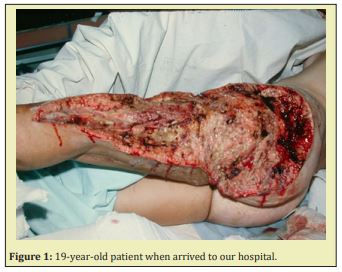
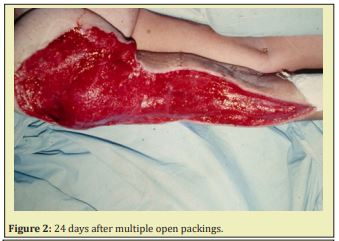
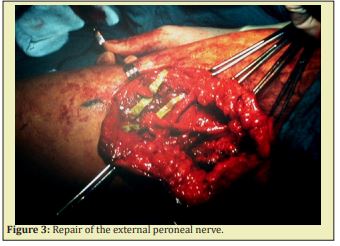
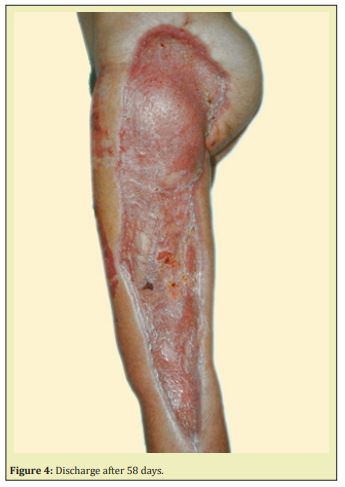
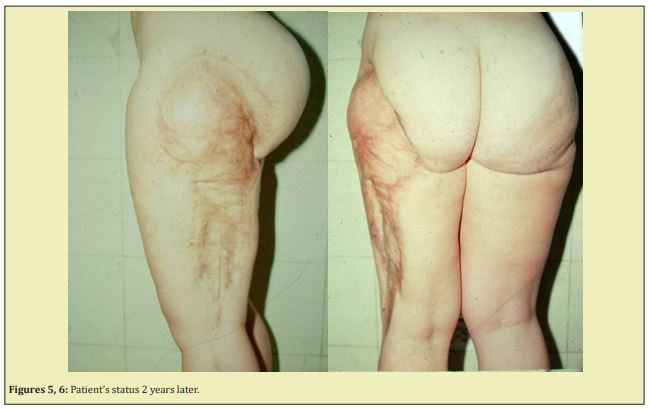
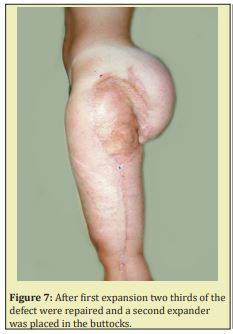
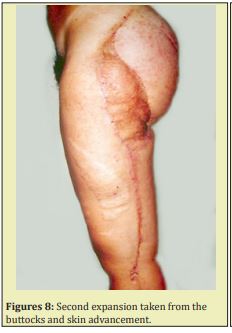
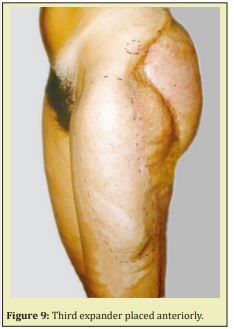
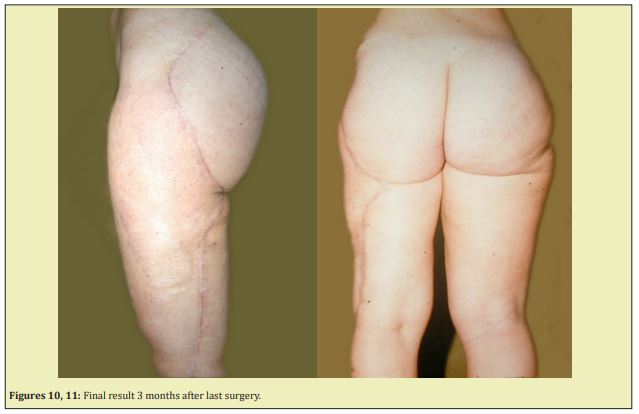
The main cause of the infection extension has been the 6 days delay in removing the bandages, when the patient status was critical. Post op control is one of the most important steps in any surgery; in addition, patient´s queries and symptoms must be heard and observed with attention. Any bandages that don´t permit a direct view of the wound must be removed and replaced after a meticulous examination. An early inspection of the wound is crucial in many complicated surgeries such as this case where dressings were removed 6 days after and infection was already disseminated.
None.
None.
Author declares that there is no conflict of interest.
- 1. Lehnhardt M, Homann HH, Daigeler A, et al. Major and lethal complications of liposuction: a review of 72 cases in Germany between 1998 and 2002. Plast Reconstr Surg. 2008;121(6):396e–403e.
- 2. Gonzáles Alana I, Marin de la Cruz D, Palao Doménech R, et al. Necrotizing fasciitis after liposuction. Acta Chir Plast. 2007;49(4):99–102.
- 3. Heitmann C, Czermak C, Germann G. Rapidly fatal necrotizing fasciitis after aesthetic liposuction. Aesthetic Plast Surg. 2000;24(5):344–347.
- 4. Umeda T, Ohara H, Hayashi O, et al. Toxic shock syndrome after suction lipectomy. Plast Reconstr Surg. 2000;106(1):204–207.
- 5. Sherman JE, Fanzio PM, White H, et al. Blindness and necrotizing fasciitis after liposuction and fat transfer. Plast Reconstr Surg. 2010;126(4):1358–1363.

